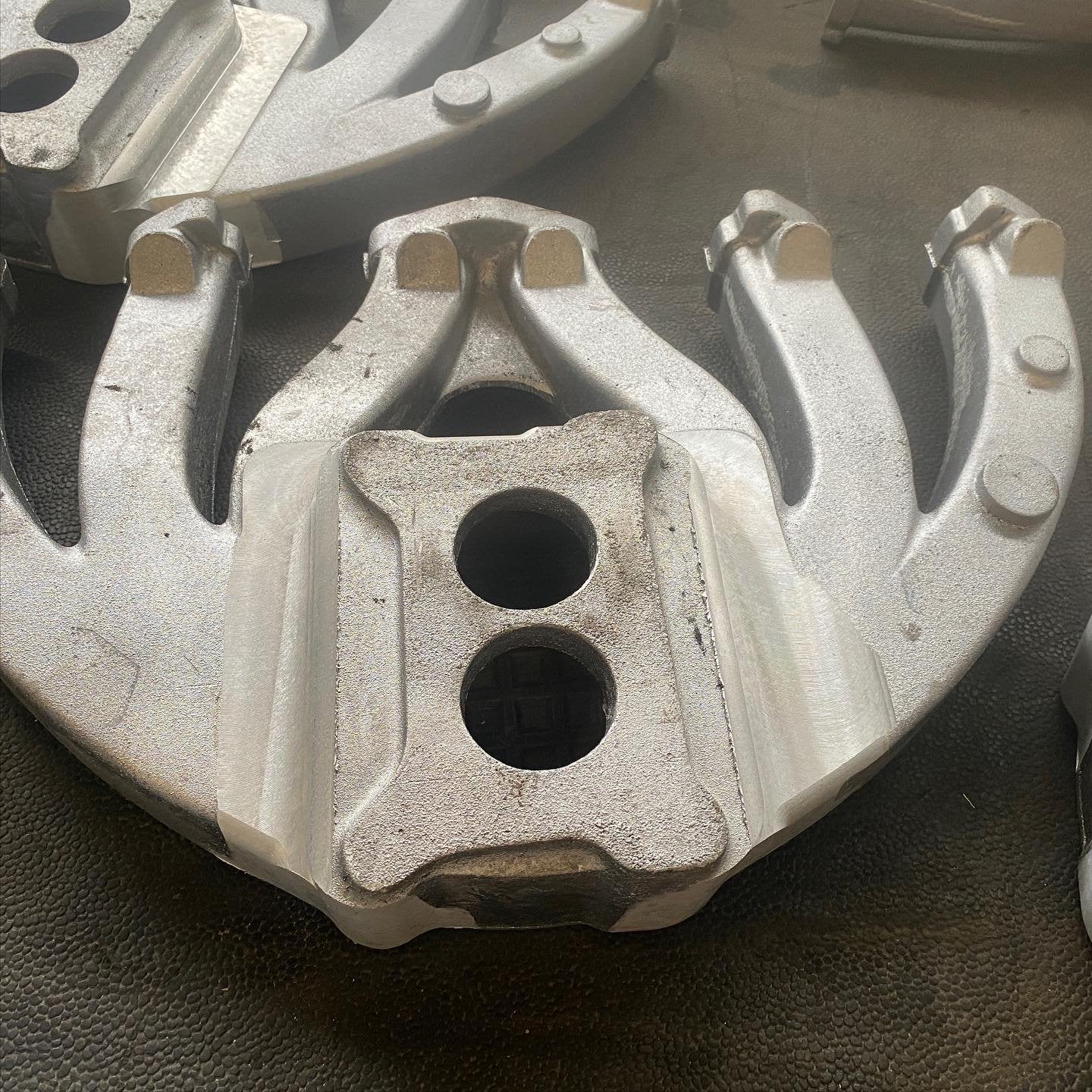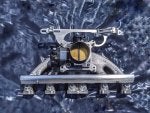The infamous slant six was born with a whisper, not a roar, but it dominated a new NASCAR compact-car racing series for the life of the series before retiring, or so it seemed, to decades of slow-but-steady daily drivers.
![Gill welding modded offenhauser Gill welding modded offenhauser]()
Gill Welding modified this Offenhauser manifold, including a modern V8 throttle body, for slant six performance.
Some have claimed that the slant six was originally meant to be a four-cylinder engine, but that engineers quickly realized they would need more power for the forthcoming, upscale-compact Valiant series and to replace flat-head sixes in Dodge trucks. Regardless, the original engine was just 170 cubic inches in displacement.
Then NASCAR created a special race for six-cylinder compact cars, which would, if all went well, become a full series. Engineers started working on a special high-performance version of the 170, with domed pistons increasing the compression ratio, a high-lift cam, redesigned long-ram intake, huge four-barrel Carter AFB carburetor (raised above the head for more of a ram effect), and a completely new exhaust system.
![Aussiespeed 4-barrel Aussiespeed 4-barrel]()
Seven Valiants entered the new NASCAR race, and at the end, all seven not only finished; they all beat the Chevy Corvair and Ford contenders. Valiants finished first through seventh. Lee Petty won by a good margin. NASCAR quickly abandoned the format, but regular buyers could get (dealer-installed) Hyper-Paks for their own cars; they were not quite as serious as the full-race versions, but the 170 cubic inch Hyper-Pak boosted output from 101 gross horsepower to 148 gross hp. That was more than the output from the 225 cubic inch slant six, which got its own Hyper-Pak version rated at 195 gross hp.
![Image]()
After the 1960 Hyper-Paks, though, the slant six performance story was pretty much over, at least as far as stock cars went. They were available only with single-barrel carburetors until the 1977 Super Six, which made the engines far more responsive; but even those were no match for the smallest Chrysler V8s.
There has been a cottage industry in adding performance to the slant six, an overbuilt and relatively efficient engine that can take far more than the factory gave it (e.g. Jerry Engle’s modern Hyper-Pack, running 13.9 quarter miles in a Dodge truck ); but only recently has the market for performance slant sixes exploded.
The Slant Six Club, a formerly national entity with a regular newsletter (some of which is soon to be reprinted in book form), has found its Facebook page deluged with photos of newly remade, high-performance sixes; dual carbs, four-barrels, and fuel injected slant-sixes seem to be dominating the old stock engines. Slant sixes are even racing Hellcats (above).
Bryce Gill, of Gill Welding & Fabrication , can modify factory aluminum slant six intakes, and has authority from Aussiespeed to modify and sell their intakes. Gill gives customer the option of a retro carb look; they also have a new stainless steel turbo header, designed as a direct bolt-on, ECUs, and numerous other products, to be covered in a future story.
With the old V8s relatively rare and quite expensive, and the slant sixes being much lighter and cheaper, perhaps it was inevitable; regardless of why, it does seem that an old dog can learn new tricks.

Some have claimed that the slant six was originally meant to be a four-cylinder engine, but that engineers quickly realized they would need more power for the forthcoming, upscale-compact Valiant series and to replace flat-head sixes in Dodge trucks. Regardless, the original engine was just 170 cubic inches in displacement.
Then NASCAR created a special race for six-cylinder compact cars, which would, if all went well, become a full series. Engineers started working on a special high-performance version of the 170, with domed pistons increasing the compression ratio, a high-lift cam, redesigned long-ram intake, huge four-barrel Carter AFB carburetor (raised above the head for more of a ram effect), and a completely new exhaust system.

Aussiespeed 4-barrel intake
Seven Valiants entered the new NASCAR race, and at the end, all seven not only finished; they all beat the Chevy Corvair and Ford contenders. Valiants finished first through seventh. Lee Petty won by a good margin. NASCAR quickly abandoned the format, but regular buyers could get (dealer-installed) Hyper-Paks for their own cars; they were not quite as serious as the full-race versions, but the 170 cubic inch Hyper-Pak boosted output from 101 gross horsepower to 148 gross hp. That was more than the output from the 225 cubic inch slant six, which got its own Hyper-Pak version rated at 195 gross hp.

Aussiespeed two barrel for Holley or Weber
After the 1960 Hyper-Paks, though, the slant six performance story was pretty much over, at least as far as stock cars went. They were available only with single-barrel carburetors until the 1977 Super Six, which made the engines far more responsive; but even those were no match for the smallest Chrysler V8s.
There has been a cottage industry in adding performance to the slant six, an overbuilt and relatively efficient engine that can take far more than the factory gave it (e.g. Jerry Engle’s modern Hyper-Pack, running 13.9 quarter miles in a Dodge truck ); but only recently has the market for performance slant sixes exploded.
Bryce Gill, of Gill Welding & Fabrication , can modify factory aluminum slant six intakes, and has authority from Aussiespeed to modify and sell their intakes. Gill gives customer the option of a retro carb look; they also have a new stainless steel turbo header, designed as a direct bolt-on, ECUs, and numerous other products, to be covered in a future story.
With the old V8s relatively rare and quite expensive, and the slant sixes being much lighter and cheaper, perhaps it was inevitable; regardless of why, it does seem that an old dog can learn new tricks.







